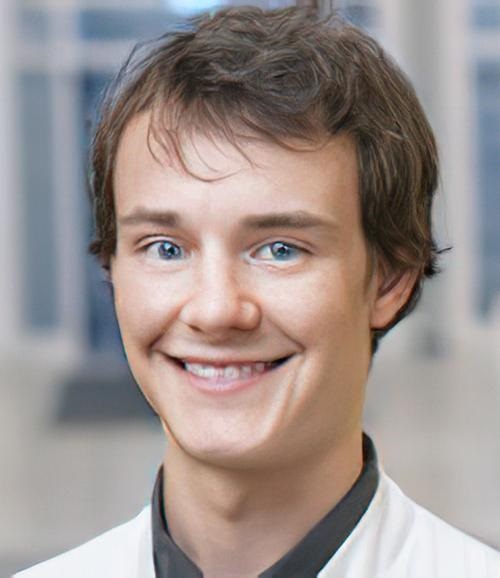Prostate cancer currently has the highest positive surgical margin rate of any cancer in men, with 21% of patients left with cancer cells at the resection site
Cancer surgeons may soon have a new technology to help them completely remove cancerous tissue during prostate cancer surgery. Called Cerenkov luminescence imaging (CLI), this new diagnostic technology under development at the Essen University Hospital in Essen, Germany, will be of interest to surgical pathologists since it could become a common intraoperative strategy to improve surgical precision during radical cancer procedures.
For example, radical prostatectomy is the removal of the entire prostate gland and surrounding tissues. It is one of the primary treatments for malignant cancer. Failure to remove all the cancer tissue during the procedure typically leads to poor clinical outcomes, including tumor reoccurrence and subsequent increased risk of metastasis and death.
A 2018 study published in Nature Scientific Reports, titled, “Positive Surgical Margins in the 10 Most Common Solid Cancers,” noted that prostate cancer has the highest positive surgical margin rate of any cancer in men, with 21.03% of patients left with remaining cancer cells at the resection site.
Currently, intraoperative frozen-section analysis of the prostate is the most common intraoperative method for real-time analysis of surgical margins. But research into CLI may provide surgeons with an additional strategy for reducing positive surgical margins.
Comparing CLI to Postoperative Histopathology
The Essen University Hospital researchers published the results of their feasibility study in the Journal of Nuclear Medicine (JNM), titled, “Intraoperative 68Ga-PSMA Cerenkov Luminescence Imaging for Surgical Margins in Radical Prostatectomy: A Feasibility Study.”
“Our objective was to assess the feasibility and accuracy of Cerenkov luminescence imaging (CLI) for assessment of surgical margins intraoperatively during radical prostatectomy,” they wrote.
According to the Essen researchers, the “single-center” study “included 10 patients with high-risk primary prostate cancer. 68Ga-PSMA PET scans were performed followed by radical prostatectomy and intraoperative CLI of the excised prostate. CLI images were analyzed postoperatively to determine regions of interest based on signal intensity, and tumor-to-background ratios were calculated. CLI tumor margin assessment was performed by analyzing elevated signals at the surface of the intact prostate images.
“To determine accuracy, tumor margin status as detected by CLI was compared to postoperative histopathology. Tumor cells were successfully detected on the incised prostate CLI images and confirmed by histopathology. Three patients had positive surgical margins, and in two of the patients, elevated signal levels enabled correct identification on CLI. Overall, 25 out of 35 CLI regions of interest proved to visualize tumor signaling according to standard histopathology,” the Essen researchers concluded.
The research showed that CLI can accurately assess surgical margins during radical prostatectomy. This first in vivo research of the technique was conducted over a 17-month period between 2018 and 2019.

“Intraoperative radio guidance with CLI may help surgeons in the detection of extracapsular extension, positive surgical margins, and lymph node metastases with the aim of increasing surgical precision,” said the study’s first author Christopher Darr, PhD (above), a resident urologist at Essen University Hospital, in a Society of Nuclear Medicine and Molecular Imaging (SNMMI) news release. “The intraoperative use of CLI would allow the examination of the entire prostate surface and provide the surgeon with real-time feedback on the resection margins.” (Photo copyright: Essen University Hospital.)
The researchers found that two of three patients who had positive surgical margins were correctly identified using CLI images. Overall, 25 of 35 CLI regions of interest successfully visualized tumor signaling, which is a result in line with standard histopathology. The one positive surgical margin CLI missed had group 3 prostate cancer at the surgical margin.
Essen Study Finds CLI Results in ‘Higher than Expected’ False Positives
A companion article published in the JNM, titled, “Cerenkov Luminescence Imaging for Surgical Margins in Radical Prostatectomy: A Surgical Perspective,” noted that, “Although this is consistent with other studies showing reduced PSMA (prostate-specific membrane antigen) expression in lower-grade prostate cancer, the interval between PSMA-agent injection and CLI (median, 333 min) was long and potentially detrimental to identification of lower-grade [prostate cancer]. Future studies may aim to reduce the interval between PSMA-agent injection and commencement of surgery to improve signal intensity and potentially the overall sensitivity of CLI.”
The Essen University Hospital’s CLI feasibility study also revealed the technique resulted in a higher-than-expected number of false positives, with 10 of 35 regions of interest showing “elevated signal levels without histopathologic evidence of PC tissue at the resection margin.” Most of the false positives occurred at the prostate base.
The Essen study authors speculated that the presence of radioactive tracer in the urinary bladder and other factors may explain the false positive rate. They suggested that, “Further optimization of the CLI protocol, or the use of lower-energy imaging tracers such as 18F-PSMA, is required to reduce false-positives.”
The researchers called for a larger study to assess CLI’s diagnostic performance.
Boris A. Hadaschik, PhD, Director of the Clinic for Urology at Essen University Hospital, added, “Radical prostatectomy could achieve significantly higher accuracy and oncological safety, especially in patients with high-risk prostate cancer, through the intraoperative use of radioligands that specifically detect prostate cancer cells. In the future, a targeted resection of lymph node metastases could also be performed in this way. This new imaging combines urologists and nuclear medicine specialists in the local treatment of patients with prostate cancer.”
Because of the high reoccurrence rate of prostate cancer in men, surgical pathologists will find this potential new strategy for reducing positive surgical margins a welcomed advancement, but additional investigation will be needed to ensure its promise can be realized.
—Andrea Downing Peck
Related Information
Cerenkov Luminescence Imaging Identifies Surgical Margin Status in Radical Prostatectomy
Positive Surgical Margins in 10 Most Common Solid Cancers
Cerenkov Luminescence Imaging for Surgical Margins in Radical Prostatectomy: A Surgical Perspective



